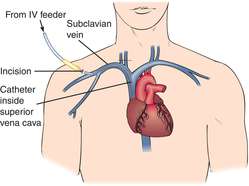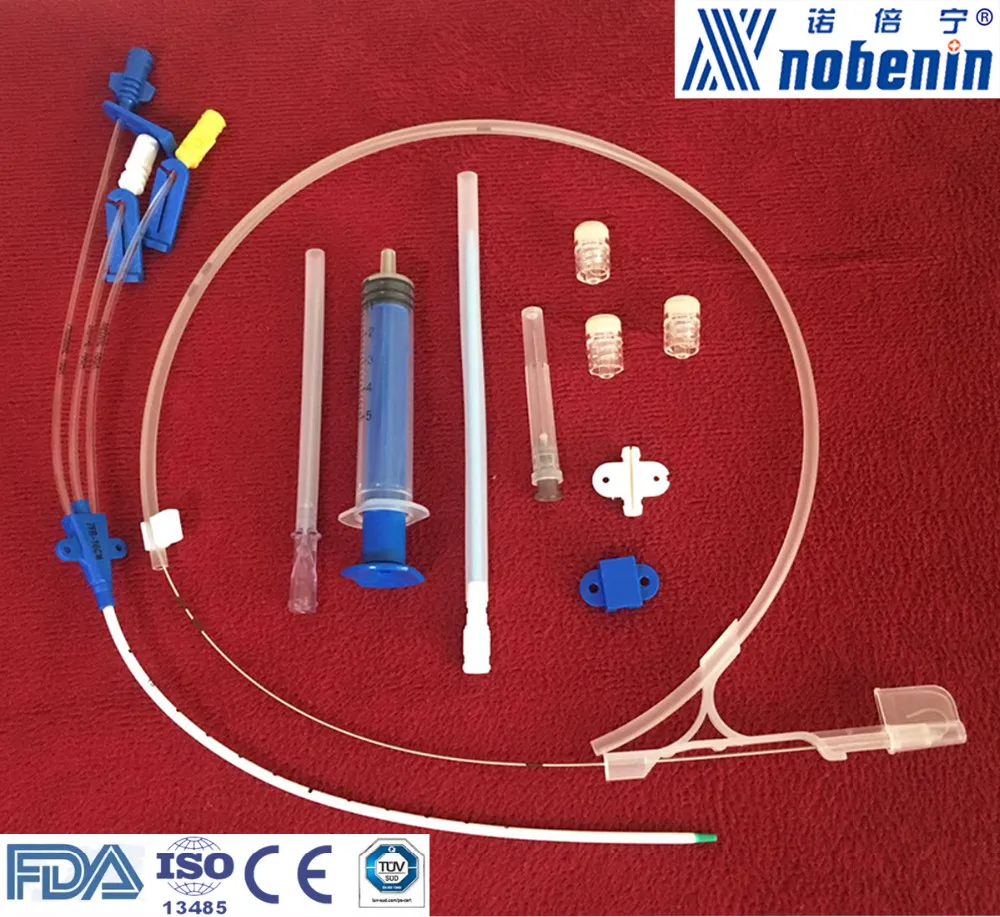

(2017) Bursting pressure of triple-lumen central venous catheters under static and dynamic loads. B, Cross section of triple-lumen balloon catheter through level A-A. Straight triple lumen central venous catheter kit, for hospi. This suggests 16-cm triple-lumen CVCs can be used safely.īeckingham, T., Roberts, A., St John, A. Double lumen catheter Triple lumen central line placement Multicath 5 up Triple lumen-cvc-cs-22703-e 7f-16cm-0.035 guide wire Hemodialysis catheter kit - triple lumen Groshong nxt clearvue 4.0 fr single lumen picc 3-way foley plastic centro central venous catheter kit, for. At 4.5 mL/s the mean peak pressure was 47.9 PSI (95% CI 42.9-52.9 PSI).ĬONCLUSIONS: No CVCs failed under dynamic loading with injection of contrast at flow rates (4.5 and 7 mL/s) high enough to support computed tomographic angiography. During dynamic testing the mean peak pressures at 7 mL/s was 81.1 PSI (95% CI 73-89.2 PSI). As you might guess, a triple lumen catheter has three. PSI at burst during static testing was 184.2 PSI (95% confidence interval 174.3-194.1 PSI). As their name implies, a multilumen catheter is a central line that has a number of lines within it. RESULTS: During static testing, 6/7 CVCs burst at the distal lumen where the glue was applied, the remaining CVC burst proximal to the hub. ReTweet if useful… Can standard central venous catheters be used for CT contrast injection? #ivteam Pressures were recorded throughout injection. Dynamic pressure testing was done with the remaining catheters, with radio-contrast injected through the unoccluded distal lumen at flow rates of 4.5 mL/s, then 7 mL/s. The CVC was then placed into a 10-cm deep water bath at 37☌ to simulate in vivo conditions and water was injected until catheter rupture. Half the CVCs (n = 7) were subjected to static testing, where the distal lumen was occluded with the guidewire and super glue at the distal end of the catheter. METHODS: We gathered 16-cm long triple-lumen CVCs (n = 14) from patients with an average dwell time of 5.2 days (☒.7 days).

The CVC might rupture at high flow rates, resulting in CVC fragmentation and embolization or contrast extravasation.The objective of this study is to determine the pressure required to burst a CVC under static load and compare this to the pressure generated by injection of contrast at high flow rates (dynamic load) through the distal (16-g) lumen of a triple-lumen CVC. Patients undergoing computed tomographic angiography require injection of contrast at high flow rates (4.5 mL/s), often CVC access is not used due to safety concerns. INTRODUCTION: Central venous catheter (CVC) access is commonplace in intensive care units. This suggests 16-cm triple-lumen CVCs can be used safely” Beckingham et al (2017). No CVCs failed under dynamic loading with injection of contrast at flow rates (4.5 and 7 mL/s) high enough to support computed tomographic angiography. QMD introduces its Biometrix Central Venous Catheter Program, engineered to ensure safety and performance.


 0 kommentar(er)
0 kommentar(er)
